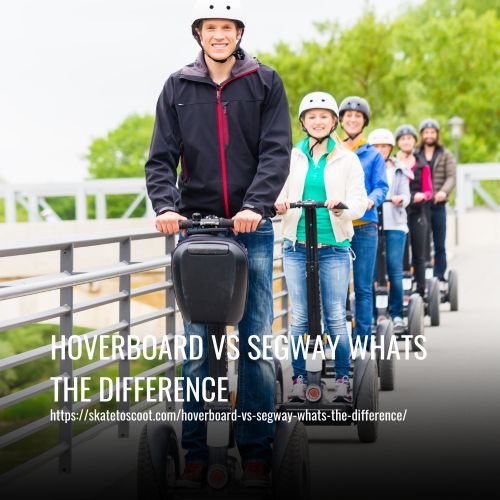As an Amazon Associate we earn from qualifying purchases.
Yes, longboards are designed to bend, which sets them apart from other types of skateboards. The bend in a longboard serves several purposes that enhance the rider’s experience. One of the main reasons for the bend is to make long rides more comfortable. By absorbing shocks and vibrations from uneven surfaces, the flex in a longboard ensures that the rider’s feet don’t cramp and allows for a smoother ride.
Moreover, the bend in a longboard provides the rider with complete control while carving or cruising. It helps maintain a proper balance and stability, reducing the risk of accidents. The flexibility of a longboard also plays a crucial role in distributing the rider’s weight evenly across the deck, enhancing control and reducing fatigue during longer rides.

Why Do Longboards Bend?
Longboards are designed to bend in order to provide riders with the necessary strength and balance while cruising or carving. The flexibility of the board plays a crucial role in ensuring a comfortable and stable ride.
When it comes to different riding styles, various flex levels offer unique experiences. For example, a flexible board is beneficial for freestyle riding as it allows for greater maneuverability and board control. On the other hand, downhill riders prefer stiffer boards that provide stability at higher speeds and prevent wheel bite.
The bend in a longboard also helps absorb vibrations and impact from uneven surfaces, resulting in a smoother ride. By distributing the rider’s weight evenly across the deck, the flex enables better control and reduces fatigue during longer rides.
What Does Longboard Bending Mean?
Longboard bending refers to the flexibility or rigidity of the longboard deck. It is an essential measurement that affects various factors, such as shock absorption, stability at different speeds, and overall ride comfort.
Different types of longboard bends are available to cater to specific riding preferences. If you prioritize high speeds and stability, a stiffer board with minimal flex is ideal. These boards provide a more predictable and controlled ride, preventing any wobbling or instability at high speeds. Downhill boards, for example, are often stiffer to ensure stability and control during fast descents.
On the other hand, if you seek a smoother and more comfortable ride with better shock absorption, a softer and more flexible board is suitable. These longboards excel in absorbing vibrations and bumps on the road, ensuring a more enjoyable cruising experience. They are commonly chosen for casual cruising, relaxed rides, or shock-absorbing purposes
How Much Flex Should A Longboard Have?
The amount of flex a longboard should have depends on your riding style and the type of riding you plan to do. If you enjoy high-speed riding or downhill racing, it is recommended to use a longboard with a stiff flex level. This provides the necessary stability and control to ride at top speeds.
On the other hand, if you are into freestyle longboarding, a longboard with a soft to medium flex level is more suitable. This allows for more maneuverability and responsiveness, making tricks and spins easier to execute.
For casual cruising and relaxed rides, a longboard with a soft flex level is preferable. This provides a comfortable and smooth ride, absorbing vibrations and bumps on the road.
Ultimately, the amount of bend or flex a longboard should have depends on your personal preference and the type of riding you plan to do. It is important to choose a flex level that matches your riding style and provides the right balance of stability, control, and comfort.
Types of Longboard Bend
Longboard bends, also known as flex, play a crucial role in determining the riding style and experience. There are three main types of longboard bends: longitudinal, lateral, and torsional. Each bend type has its own unique characteristics and is suited for specific riding needs.
1. Longitudinal Bend:
The longitudinal bend refers to the flex that occurs from the nose to the tail of the longboard. This type of bend is often measured and rated by professional riders to assess its flex rating. When the rider applies pressure to bend the board, it tends to bend deeper into the center. Longboards with a longitudinal bend are popular among experienced riders who prioritize stability and control.
2. Lateral Bend:
A lateral bend occurs when the longboard bends from the left to the right side. This type of bend is commonly experienced when the rider performs sideways movements or turns. Longboards with lateral bends are well-suited for freestyle longboarding and dancing, as they provide the necessary flexibility for maneuverability.
3. Torsional Bend:
The torsional bend combines both longitudinal and lateral bends. It refers to the ability of the longboard to twist or rotate along its axis. A board with good torsional flex allows for precise and controlled carving and sliding. A firmer board will quickly return to its regular shape, providing enhanced stability during aggressive riding.
Different Levels of Longboard Bend
Longboards have different levels of bend, also known as flex, to cater to the different preferences and skills of riders. The bend level of a longboard determines its stiffness and flexibility, which ultimately affect the riding experience. Here are the three main levels of the longboard bend:
1. Soft Bend:
Longboards with a soft bend offer less stiffness compared to other levels. While they may not provide as much stability as stiffer boards, soft-bend longboards excel in shock absorption. This means they are ideal for riders looking for a smooth and comfortable ride, especially on rough or uneven surfaces. The soft bend allows the board to absorb the impact of bumps and vibrations, resulting in a more enjoyable and less jarring ride.
2. Medium Bend:
A medium bend in a longboard strikes a balance between stiffness and flexibility. These boards generally provide a more responsive and lively ride compared to their softer counterparts. They offer an excellent combination of energy return and stress absorption, making them suitable for various riding styles and terrains. Riders who enjoy a mix of speed, control, and comfort will find the medium bend level to be a versatile choice.
3. Stiff Bend:
For high-speed riding and intense maneuvers, longboards with a stiff bend are the go-to option. These boards offer superior stability and control, allowing riders to push the limits in downhill riding or fast freeriding. The stiff bend level ensures minimal flex when pressure is applied, providing a solid platform for aggressive riding. It is also beneficial for riders who prefer a more responsive feel and precise control over their board.
How Much Flex Does a Longboard Need to Be Comfortable to Ride?
The ideal amount of flex for a longboard to be comfortable to ride depends on several factors, including the rider’s skill level, riding style, and the surface they will be riding on. For beginners, longboards in the size range of 33′′-38′′ are often recommended, as they are easy to manage and control. However, the length should not be too short for the rider.
In terms of flex, riders should consider their riding style and the surface they will be riding on. If you prefer a smoother and more forgiving ride, a longboard with a softer flex is recommended. Soft flex longboards provide more shock absorption, making them ideal for cruising on rough or uneven surfaces.
On the other hand, riders who prioritize stability and control at higher speeds or during intense maneuvers may opt for a stiffer longboard. Stiff flex longboards offer minimal flex when pressure is applied, providing a solid platform for aggressive riding and precise control.
Common Misconceptions About Longboard Bending
Misunderstandings and concerns about the quality and structure of longboards often arise due to a lack of understanding about their natural characteristic of flex. To clarify these misconceptions, it is important to understand the true nature and advantages of flex in longboards.
1. The Fear of Structural Weakness:
There is a common misconception about longboard bending, where some believe that a flexible board indicates poor construction or inferior quality. However, it is important to note that flexibility is not a sign of weakness. In fact, manufacturers deliberately choose to design longboards with flexibility in order to enhance the riding experience. These high-quality longboards are built to be both durable and flexible, ensuring they can handle different riding styles without compromising performance or safety.
2. The Natural Characteristic of Flex:
Flex is a common feature in longboards. It allows the rider to have a smoother and more enjoyable experience, adapting to different terrains and riding styles.
Storage Techniques to Avoid Bending or Warping
Proper storage is essential for maintaining the structural integrity and flex of your longboard. Follow these storage techniques to prevent bending or warping:
1. Keep Away from Extreme Temperatures:
Exposure to extreme temperatures can cause the materials of your longboard to expand or contract, potentially resulting in warping or damage to the deck’s flex. It is recommended to store your longboard in a location that is not exposed to high heat or cold in order to maintain the natural flex of the board.
2. Horizontal Storage:
To properly store your longboard, it is recommended to place it horizontally. This helps distribute the weight evenly and prevents any possible bending. It is advisable to use a rack or wall mount specifically designed for longboards to ensure stable and secure storage.
3. Avoid Excessive Pressure:
Do not place heavy objects on top of your longboard during storage. Excessive pressure can compress the deck and compromise its flex over time. Keep your longboard in a clear and open space to prevent any accidental pressure on the deck.
Advantages Of Flexible Longboards
Flexible longboards offer a number of advantages for riders. The most obvious advantage is that they provide a smoother and more comfortable ride, allowing riders to navigate different terrains with ease.
1. Easier Maneuverability:
A flexible longboard is known for its ability to easily turn and carve, making it ideal for riders who enjoy cruising or carving. The flexibility of the board allows for quick and smooth transitions, making it easier to navigate tight turns and corners. This increased maneuverability can provide a more enjoyable and responsive riding experience.
2. Forgiving Performance:
For riders who are still mastering their skills or trying out new tricks, a flexible longboard can be more forgiving. The flex of the board absorbs and dampens the impact of mistakes or uneven terrain, making it easier to recover and maintain control. This forgiving performance can help build confidence and encourage riders to push their limits.
3. Enhanced Grip and Traction:
A flexible longboard offers better grip and traction, especially during technical riding or when performing tricks. The flex of the board allows the wheels to maintain better contact with the ground, resulting in increased stability and control. This enhanced grip enables riders to confidently execute slides, turns, and maneuvers with precision.
4. Improved Comfort:
Long rides can be more comfortable on a flexible longboard due to its ability to absorb vibrations and shocks. The flex of the board acts as a natural shock absorber, providing a smoother and more comfortable ride. This can be particularly beneficial for riders who are cruising on rough or uneven surfaces, as the flexible deck helps to reduce fatigue and discomfort.
5. Versatility:
Flexible longboards are versatile and can accommodate various riding styles and preferences. Whether you enjoy freestyle riding, downhill carving, or simply cruising around town, a flexible longboard can adapt to your needs. The flexibility allows the board to be responsive in different situations, providing a stable and enjoyable riding experience for riders of all skill levels.
Drawbacks Of A Flexible Longboard
Although flexible longboards offer many advantages, there are some potential drawbacks to consider. One of the biggest disadvantages is durability.
Decreased Durability:
One potential drawback of riding a flexible longboard is that it may wear out more quickly compared to a stiffer board. The constant flexing and bending can put extra strain on the deck, leading to eventual wear and tear. It’s important to consider the quality of materials and construction when choosing a flexible longboard to ensure durability.
Reduced Stability at High Speeds:
While a flexible longboard offers enhanced maneuverability at lower speeds, it may be less stable when riding at high speeds. The flex in the board can cause some wobbling or instability, making it less ideal for downhill riding or riding at moderate to high speeds. Experienced riders who prefer faster-paced riding may find a stiffer board more suitable for maintaining stability and control.
Challenging Control:
A flexible longboard can be more challenging to control compared to a stiffer board. The flex and give in the deck can hinder responsiveness and make it harder to execute precise movements. Riders must ensure they are comfortable with the specific flex and setup of their board to maximize control and minimize the risk of accidents or loss of control.
FAQs
Longboards are known for their ability to provide smooth rides and stability, making them popular among riders who enjoy cruising, downhill riding, and freestyle longboarding. One question that often arises is whether longboards are supposed to bend or be stiff. In this article, we will dive into this frequently asked question and provide you with the answers you need to make an informed decision.
The answer to this question depends on your personal riding style and preferences. If you are just getting started with longboarding, an all-purpose board with a moderate amount of flex may be suitable for you. This type of board offers a balance between stability and maneuverability, making it ideal for beginners.
As you gain more experience and develop a specific riding style, you may want to consider a board with a more targeted flex. For example, if you are interested in freestyle longboarding and performing tricks, a board with a higher level of flex will allow for more board control and responsiveness.
There is no universal answer to this question as the amount of flex needed in a longboard varies depending on your riding style. As a beginner, an all-purpose board with a moderate amount of flex will suffice. As you progress and become more experienced, you can experiment with different flex levels to find what works best for you.
Yes, the curvature is necessary on a longboard. Longboards typically have a concave shape, meaning they have a slight curve along the length of the deck. This curvature provides the rider with more grip and traction compared to a regular board. It also makes sliding, drifting, and turning easier, enhancing overall control and maneuverability.
Flexibility is an important aspect to consider when choosing a longboard deck. A flexible board can provide a more comfortable ride as it absorbs vibrations and impact from rough surfaces. This is particularly beneficial for long rides, as the added flex helps to reduce fatigue and allows for a smoother experience.
Conclusion:
The answer to the question “Are longboards supposed to bend?” is a resounding yes! The flexibility and durability of a bending longboard are what make it a smooth and thrilling ride.
So embrace the bend, hit the streets, and let the curves take you on an exhilarating journey of speed and style. Remember, it’s not about the straight and narrow, it’s about the bend and flow! Happy riding!
Amazon and the Amazon logo are trademarks of Amazon.com, Inc, or its affiliates.



